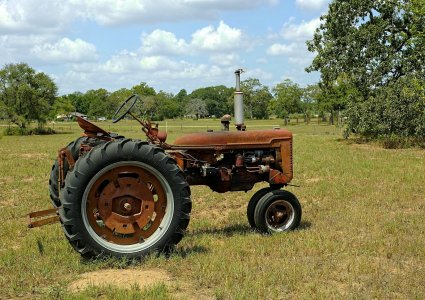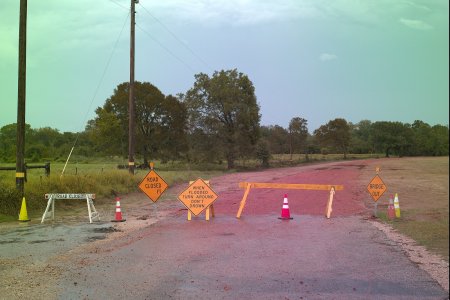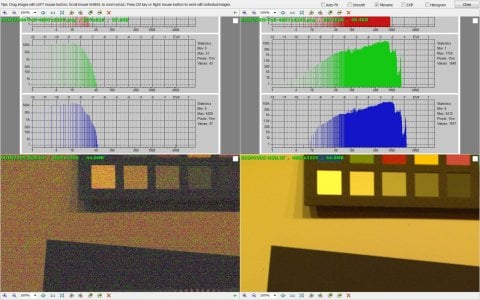For focus- the term "Spatial Gradient" just popped into my mind... Had not thought about it in decades.
We were doing image processing for automatic object recognition. My wife adapted some of the algorithms for Medical applications.
She had a 1MPixel microscope camera some 30+ years ago. I wrote the code for her. I've run some of my old benchmark codes from the 1980s on newer machines. They run faster. I had code that took one solid month to run on a Vax 11/780 generating fractal based imagery.
We were doing image processing for automatic object recognition. My wife adapted some of the algorithms for Medical applications.
She had a 1MPixel microscope camera some 30+ years ago. I wrote the code for her. I've run some of my old benchmark codes from the 1980s on newer machines. They run faster. I had code that took one solid month to run on a Vax 11/780 generating fractal based imagery.
Freakscene
Obscure member
Wow, I used a variant of this segmentation technique, in part, to develop our automated parasite counting system for fish farmers. I never put it together that it was the RFF Brian Sweeney. Awesome. Thank you and Nina.For focus- the term "Spatial Gradient" just popped into my mind... Had not thought about it in decades.
We were doing image processing for automatic object recognition. My wife adapted some of the algorithms for Medical applications.
She had a 1MPixel microscope camera some 30+ years ago. I wrote the code for her. I've run some of my old benchmark codes from the 1980s on newer machines. They run faster. I had code that took one solid month to run on a Vax 11/780 generating fractal based imagery.
Last edited:
jonal928
Well-known
Another working day is over
43 years ago, Shalom started his work at the "Dan" bus company. As mentioned, "Dan" is one of the largest public transportation companies in Israel, which provides service in central Tel Aviv and the surrounding cities. Without Shalom, whose responsibility is to carry out the necessary repairs, the company bus drivers, will not be able to do their job, and provide the required service to the users of public transport in Tel Aviv and its surroundings. After 43 years of work, Shalom is no longer as young as he was when he joined the company at the age of 22. But Shalom's spirit is strong, and he intends to continue coming to work even after his imminent retirement.
Sigma DP2 Merrill
 _SDI0883 S3 by Jeri Leibovits, on Flickr
_SDI0883 S3 by Jeri Leibovits, on Flickr
**
43 years ago, Shalom started his work at the "Dan" bus company. As mentioned, "Dan" is one of the largest public transportation companies in Israel, which provides service in central Tel Aviv and the surrounding cities. Without Shalom, whose responsibility is to carry out the necessary repairs, the company bus drivers, will not be able to do their job, and provide the required service to the users of public transport in Tel Aviv and its surroundings. After 43 years of work, Shalom is no longer as young as he was when he joined the company at the age of 22. But Shalom's spirit is strong, and he intends to continue coming to work even after his imminent retirement.
Sigma DP2 Merrill
 _SDI0883 S3 by Jeri Leibovits, on Flickr
_SDI0883 S3 by Jeri Leibovits, on Flickr**
D
Deleted member 82967
Guest
For focus- the term "Spatial Gradient" just popped into my mind... Had not thought about it in decades.
We were doing image processing for automatic object recognition. My wife adapted some of the algorithms for Medical applications.
She had a 1MPixel microscope camera some 30+ years ago. I wrote the code for her. I've run some of my old benchmark codes from the 1980s on newer machines. They run faster. I had code that took one solid month to run on a Vax 11/780 generating fractal based imagery.
Yes, I see "gradient" a lot when reading about the subject at hand.
As to VAXs my team selected a PDP-11/32 (?) to control ground-based gas turbines made by the then Ruston Gas Turbines Ltd in Lincoln, England.
Keith
The best camera is one that still works!
Another working day is over
43 years ago, Shalom started his work at the "Dan" bus company. As mentioned, "Dan" is one of the largest public transportation companies in Israel, which provides service in central Tel Aviv and the surrounding cities. Without Shalom, whose responsibility is to carry out the necessary repairs, the company bus drivers, will not be able to do their job, and provide the required service to the users of public transport in Tel Aviv and its surroundings. After 43 years of work, Shalom is no longer as young as he was when he joined the company at the age of 22. But Shalom's spirit is strong, and he intends to continue coming to work even after his imminent retirement.
Sigma DP2 Merrill
_SDI0883 S3 by Jeri Leibovits, on Flickr
**
Terrific photo!
jonal928
Well-known
Thanks!Terrific photo!
Probably the PDP 11/23: one of the first PDP 11 series implemented on a couple of chips. with full floating point in hardware.Yes, I see "gradient" a lot when reading about the subject at hand.
As to VAXs my team selected a PDP-11/32 (?) to control ground-based gas turbines made by the then Ruston Gas Turbines Ltd in Lincoln, England.
Digital Micro PDP-11/23 - Computer - Computing History
The PDP11 was Digitals successor to the hugely successful PDP8. The PDP11 was Digital's successor to the hugely successful PDP8. The PDP11 was a 16 bit machine and was launched in 1970. Our machine...
www.computinghistory.org.uk
Some of my friends bought one ~1982 to set up a consulting side business.
D
Deleted member 82967
Guest
yep, that was it now I've been reminded - ta!Probably the PDP 11/23: one of the first PDP 11 series implemented on a couple of chips. with full floating point in hardware.
Digital Micro PDP-11/23 - Computer - Computing History
The PDP11 was Digitals successor to the hugely successful PDP8. The PDP11 was Digital's successor to the hugely successful PDP8. The PDP11 was a 16 bit machine and was launched in 1970. Our machine...www.computinghistory.org.uk
Some of my friends bought one ~1982 to set up a consulting side business.
D
Deleted member 82967
Guest
Here's an old tractor a la DP2 Merrill. It disappeared a few weeks later ...

I miss the camera, it was preety sharp ...
Tech note: original frame cropped:
a) to provide space at camera right for direction of motion.
b) to place the object's centroid of area at the Golden Mean horizontally and vertically, carefully avoiding the "thirds rule" ...

I miss the camera, it was preety sharp ...
Tech note: original frame cropped:
a) to provide space at camera right for direction of motion.
b) to place the object's centroid of area at the Golden Mean horizontally and vertically, carefully avoiding the "thirds rule" ...
Last edited by a moderator:
I miss it too and just from looking at the Pictures!Here's an old tractor a la DP2 Merrill. It disappeared a few weeks later ...
View attachment 4820133
I miss the camera, it was preety sharp ...
Tech note: original frame cropped:
a) to provide space at camera right for direction of motion.
b) to place the object's centroid of area at the Golden Mean horizontally and vertically, carefully avoiding the "thirds rule" ...
Thought about what a great Microscope camera this would have made- all the colors from the same location, would have added color processing to the object recognition. "In the Day", we did spectral and spatial processing for object recognition, using two colors taken from two different but registered detectors. The 1980s for me.
Keith
The best camera is one that still works!
I've often thought that this thread's title should be changed to DP 1/2/3 Merrills and let each poster identify which camera was used. I always wish we had more DP1 images in this group ...I very seldom see anything from that camera. As for your pic, this is what the little Merrills excel at ... amazing sharpness that doesn't make your eyes bleed! 🙂Here's an old tractor a la DP2 Merrill. It disappeared a few weeks later ...
View attachment 4820133
I miss the camera, it was preety sharp ...
Tech note: original frame cropped:
a) to provide space at camera right for direction of motion.
b) to place the object's centroid of area at the Golden Mean horizontally and vertically, carefully avoiding the "thirds rule" ...
D
Deleted member 82967
Guest
Last edited by a moderator:
jonal928
Well-known
jonal928
Well-known
jonal928
Well-known
D
Deleted member 82967
Guest
Blocked Street (no SPP)

The green vignette comes from the close distance of the DP2 Merrill lens from the Foveon F20 sensor. SPP corrects this effect automatically but this image is an as-is RGB export from RawDigger which has no such tricks up it's sleeve! What you see here is what the sensor got.
Sigma uses a dichroic UV/IR blocking filter over the sensor ... such sensors are sensitive to incident ray angle. I once tried a B+W 486 on my SD14 and got the same thing at 17mm focal length with my 17-50 zoom.

The green vignette comes from the close distance of the DP2 Merrill lens from the Foveon F20 sensor. SPP corrects this effect automatically but this image is an as-is RGB export from RawDigger which has no such tricks up it's sleeve! What you see here is what the sensor got.
Sigma uses a dichroic UV/IR blocking filter over the sensor ... such sensors are sensitive to incident ray angle. I once tried a B+W 486 on my SD14 and got the same thing at 17mm focal length with my 17-50 zoom.
jonal928
Well-known
D
Deleted member 82967
Guest
Nicely seen!
Taking the "elephant" to be the mass of denser vegetation in the middle with an upward-curled "trunk" towards camera left ...
... perhaps crop 1/8 of the frame from the left side to remove those lamps - which are drawing my eye to top left.
D
Deleted member 82967
Guest
Blocked Street (no SPP)
Sigma uses a dichroic UV/IR blocking filter over the sensor ... such sensors are sensitive to incident ray angle.
Oops ... such filters are sensitive to incident ray angle
jonal928
Well-known
Thank you for your response. Indeed I understand your opinion, and your proposal regarding the proposed cutting of the frame. But if I do as you say, then I will remain in a situation where the balance that exists between the 'electric elephant' and the metal bridge on the right is violated, and the same for the other lighting items, that are an integral part of the image. And if I do so, maybe the lighting setup won't bother you anymore. but at the same time, there is a chance that the balance between nature and urban life in the pic will be broken.Nicely seen!
Taking the "elephant" to be the mass of denser vegetation in the middle with an upward-curled "trunk" towards camera left ...
... perhaps crop 1/8 of the frame from the left side to remove those lamps - which are drawing my eye to top left.
Share:
-
This site uses cookies to help personalise content, tailor your experience and to keep you logged in if you register.
By continuing to use this site, you are consenting to our use of cookies.






